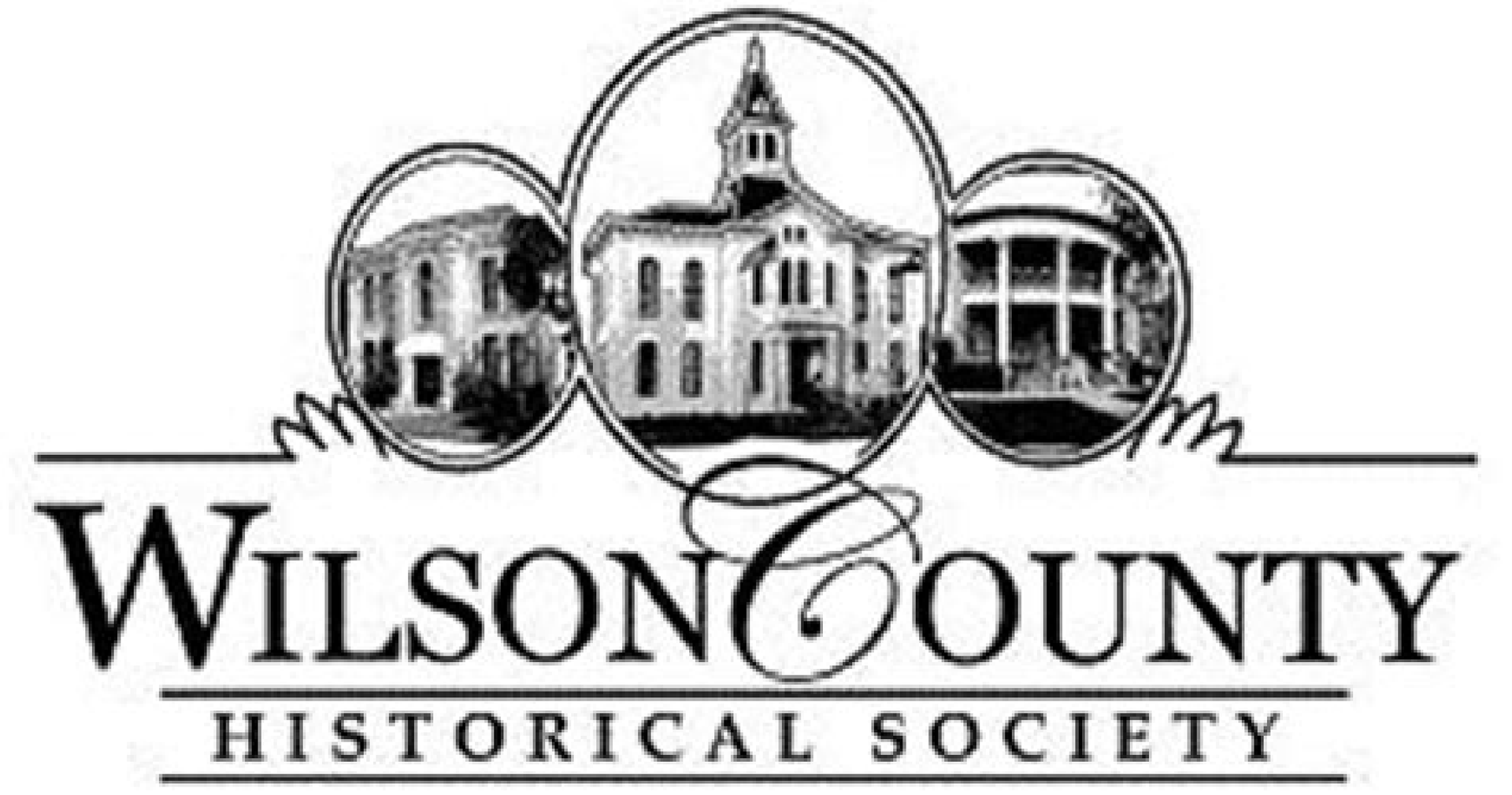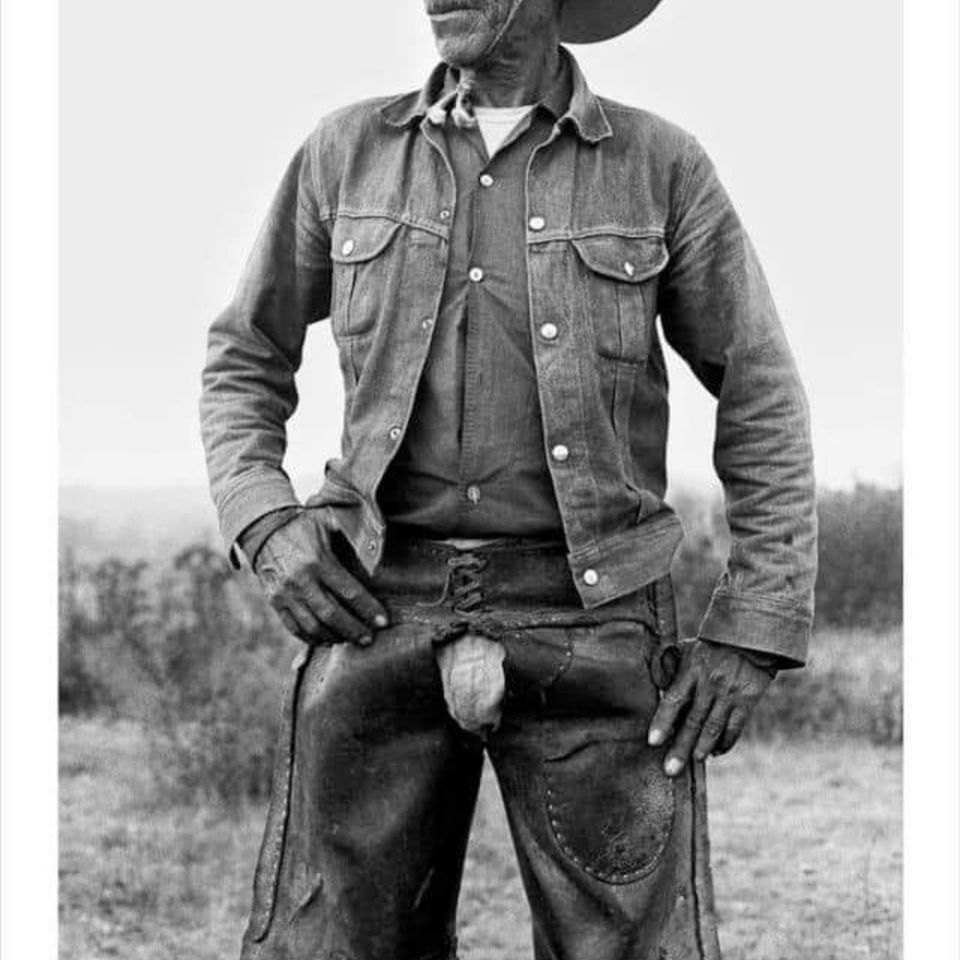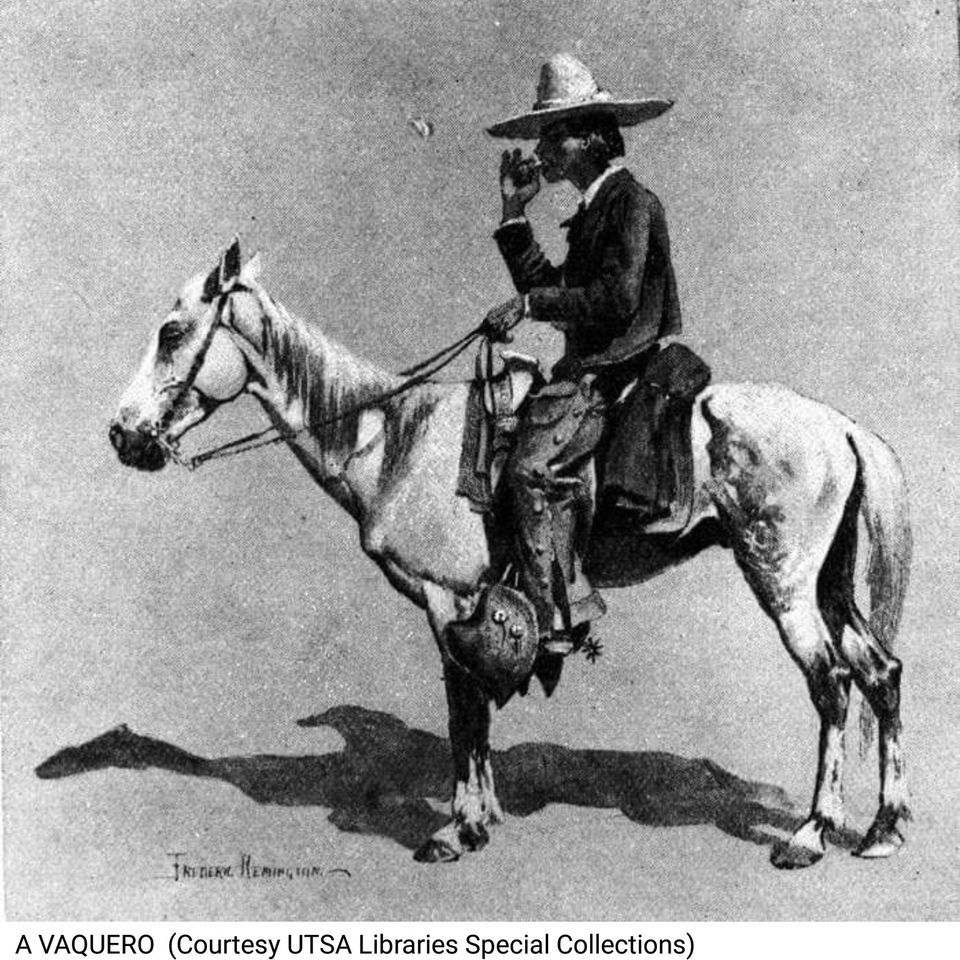by Barbara J. Wood
VAQUERO
Vaqueros
Vaqueros (spanish for cowboys) ..... were the original cowboys of Texas. Vaqueros started herding cattle in northern Mexico in the 1590's. They lived in Texas a long time before cowboys did because Texas was part of Mexico. Wilson County Texas had their own Mexican Cowboys ... workers of cows. (However in the 1500s this area was still Nueva España (New Spain).)
☆☆☆☆☆☆☆☆☆☆☆☆☆☆☆☆☆☆☆☆☆☆☆☆☆☆☆☆☆☆☆
PETE GARCIA ... A TRUE COWBOY RAISED IN THE TRADITION OF A VAQUERO. Pete Garcia was one of the best bronco busters of South Texas who spent his later years as
ranch foreman of the Dewees Ranch in southern Wilson County.
Cowboying in South Texas developed from the activities of the vaqueros in adjacent Mexico. Their influence went back to the introduction of the horse to America by the Spanish. The first cowboy was probably a mission Indian who developed into the vaquero. The vaquero developed on the open range ranches. They were mostly from the lower class Mexican citizens. These men adopted the Spanish horse riding equipment to better suit the handling of cattle on
the open range of northern Mexico and southern Texas. They developed the technique of roundups, cattle drives, bronco busting and the range protocol. It was in this rich tradition that Pete Garcia grew up.
Pete Garcia was a local individual who typified the image of a real cowboy.
Working as the manager of a ranch, he had to have the traits of an expert horse rider, be a good roper, a tracker and have knowledge of local cattle brands. He also had to be able to ride miles in wind, rain and storms to mend fences and look for missing calves. His life in general was a very hard existence. As he managed the Dewees Ranch in his later years, he was noted to be a cowboy's cowboy. His ability to break and train horses was well recognized all over South
Texas. Even at sixty years of age it was still difficult to find a horse which could out maneuver him.
Pete Garcia was a working cowboy who spent at least 55 years riding horses and wrestling steers. He was a small framed, wiry man with a sunburned face. He had a great memory when it came to talking about his lifelong cowboying experience. He was born in 1911 and began his cowboying at the age of 9 years. Early on, his parents encouraged him to go to school but he decided to go to work instead. He began working on the Franklin Ranch near the San Miguel River milking cows, chopping wood, helping with the house chores and for entertainment, he started riding calves.
While working at the Franklin ranch he became a good friend of Dick Shelton, who became his mentor. Later, Shelton became a world champion bull dogger and taught Pete the
fundamentals of cowboying competitions. After a couple of years Pete started breaking horses and through his lifetime he estimated that he broke over 1000 horses.
At the age of 14 he began working for Atascosa County Sheriff Dow Macada. He slept in the jail and did various chores around the jail and at Macada's ranch.
In 1926, Sheriff Masada bought about 2000 head of longhorn cattle from Florida. They were very difficult to handle. Pete asked the sheriff to obtain some rope so that he could rope some of the cattle. The next day, Pete and his coworker roped one of the mean cows just by the horn. Pete then jumped on her back and bull dogged her to the ground. The cow became almost impossible to handle so the sheriff cut a tendon in her leg but this didn't change her attitude. Pete then asked the sheriff to get on his horse before he turned the animal loose. However, the sheriff didn't heed Pete's request. Pete twisted the cow's head and then ran and jumped on his horse. He was safe but the mean heifer saw the sheriff standing on the ground nearby and went after him. The sheriff, a large individual, ran and jumped up into the nearest mesquite
tree. This tree was a small scrub like tree. The sheriff was in the top of it swaying back and forth while the cow was below trying to hook him. All of the nearby cowboys were laughing at the sheriff as he was hollering until the angry heifer was finally subdued.
A few years later Pete went to work breaking horses for a Mr. Sturgis for a salary of fifteen dollars a month plus board. In a few months enough horses were broken and his salary was
raised to eighteen dollars a month and Pete felt he really had it made.
Later, he worked on other nearby ranches and decided to start rodeoing. He preferred riding Brahman bulls because they were rougher and the judges would credit him with more points. He also rode horses bareback and with a saddle. He rode in nearly all major rodeos including five times at the Madison Square Garden in New York City. However, after five years he quit rodeoing with a lot of broken bones and not much money.
Pete would become a contentious man after drinking liquor and he would want to fight. One time within three hours he was jailed three times and was headed there for the fourth time. He was fortunate though as some girls promised the law they would take him away with them if he wasn't placed in jail again.
The 1930's were his hardest time and he would do a bit of anything involving ranching to survive. It was during these times he met Rosa and married her in 1938. Things didn't get any easier after the marriage and many times he and Rosa had to live in a tent while he was cowboying. Rosa insisted living with a cowboy wasn't easy but she would laugh at Pete's tales of the hard but happy past years. During their marriage they had seven children plus one adopted son.
In his later years, Pete was given the opportunity to manage the ※Dewees ranch and tended to 800 cattle on the 2500 acres with the help of seven dogs. Even at his older age it was difficult to find a cow or calf which he could not subdue. When asked when he would quit cowboying, he rapidly replied, "When the Good Lord calls me".
(Compiled by Gene Maeckel from the files of Wilson County Historical Commission Archives).
☆☆☆☆☆☆☆☆☆☆☆☆☆☆☆☆☆☆☆☆☆☆☆☆☆☆☆☆☆☆☆
※At the end of the Civil war, the Dewees brothers formed a partnership. As a partnership the brothers began to buy large portions of land and cattle. The land covered three different counties, Karnes, Wilson and Atascosa and spread over 90,000 acres. Together the brothers bought and raised thousands of long horned cattle, which they sent all around the United States. The brothers even drove cattle over the famous Chisolm Trail to Kansas. In one year the brothers sent over 20,000 head of cattle to different portions of the U.S. The Dewees ranch was one of the largest ranch operations of its time and was also home of the longest three plank fence ever built that stretched 211 miles.(The History Of Wilson County (Louise Stadler) pages 58-60)
Vaqueros
Vaqueros (spanish for cowboys) ..... were the original cowboys of Texas. Vaqueros started herding cattle in northern Mexico in the 1590's. They lived in Texas a long time before cowboys did because Texas was part of Mexico. Wilson County Texas had their own Mexican Cowboys ... workers of cows. (However in the 1500s this area was still Nueva España (New Spain).)
☆☆☆☆☆☆☆☆☆☆☆☆☆☆☆☆☆☆☆☆☆☆☆☆☆☆☆☆☆☆☆
PETE GARCIA ... A TRUE COWBOY RAISED IN THE TRADITION OF A VAQUERO. Pete Garcia was one of the best bronco busters of South Texas who spent his later years as
ranch foreman of the Dewees Ranch in southern Wilson County.
Cowboying in South Texas developed from the activities of the vaqueros in adjacent Mexico. Their influence went back to the introduction of the horse to America by the Spanish. The first cowboy was probably a mission Indian who developed into the vaquero. The vaquero developed on the open range ranches. They were mostly from the lower class Mexican citizens. These men adopted the Spanish horse riding equipment to better suit the handling of cattle on
the open range of northern Mexico and southern Texas. They developed the technique of roundups, cattle drives, bronco busting and the range protocol. It was in this rich tradition that Pete Garcia grew up.
Pete Garcia was a local individual who typified the image of a real cowboy.
Working as the manager of a ranch, he had to have the traits of an expert horse rider, be a good roper, a tracker and have knowledge of local cattle brands. He also had to be able to ride miles in wind, rain and storms to mend fences and look for missing calves. His life in general was a very hard existence. As he managed the Dewees Ranch in his later years, he was noted to be a cowboy's cowboy. His ability to break and train horses was well recognized all over South
Texas. Even at sixty years of age it was still difficult to find a horse which could out maneuver him.
Pete Garcia was a working cowboy who spent at least 55 years riding horses and wrestling steers. He was a small framed, wiry man with a sunburned face. He had a great memory when it came to talking about his lifelong cowboying experience. He was born in 1911 and began his cowboying at the age of 9 years. Early on, his parents encouraged him to go to school but he decided to go to work instead. He began working on the Franklin Ranch near the San Miguel River milking cows, chopping wood, helping with the house chores and for entertainment, he started riding calves.
While working at the Franklin ranch he became a good friend of Dick Shelton, who became his mentor. Later, Shelton became a world champion bull dogger and taught Pete the
fundamentals of cowboying competitions. After a couple of years Pete started breaking horses and through his lifetime he estimated that he broke over 1000 horses.
At the age of 14 he began working for Atascosa County Sheriff Dow Macada. He slept in the jail and did various chores around the jail and at Macada's ranch.
In 1926, Sheriff Masada bought about 2000 head of longhorn cattle from Florida. They were very difficult to handle. Pete asked the sheriff to obtain some rope so that he could rope some of the cattle. The next day, Pete and his coworker roped one of the mean cows just by the horn. Pete then jumped on her back and bull dogged her to the ground. The cow became almost impossible to handle so the sheriff cut a tendon in her leg but this didn't change her attitude. Pete then asked the sheriff to get on his horse before he turned the animal loose. However, the sheriff didn't heed Pete's request. Pete twisted the cow's head and then ran and jumped on his horse. He was safe but the mean heifer saw the sheriff standing on the ground nearby and went after him. The sheriff, a large individual, ran and jumped up into the nearest mesquite
tree. This tree was a small scrub like tree. The sheriff was in the top of it swaying back and forth while the cow was below trying to hook him. All of the nearby cowboys were laughing at the sheriff as he was hollering until the angry heifer was finally subdued.
A few years later Pete went to work breaking horses for a Mr. Sturgis for a salary of fifteen dollars a month plus board. In a few months enough horses were broken and his salary was
raised to eighteen dollars a month and Pete felt he really had it made.
Later, he worked on other nearby ranches and decided to start rodeoing. He preferred riding Brahman bulls because they were rougher and the judges would credit him with more points. He also rode horses bareback and with a saddle. He rode in nearly all major rodeos including five times at the Madison Square Garden in New York City. However, after five years he quit rodeoing with a lot of broken bones and not much money.
Pete would become a contentious man after drinking liquor and he would want to fight. One time within three hours he was jailed three times and was headed there for the fourth time. He was fortunate though as some girls promised the law they would take him away with them if he wasn't placed in jail again.
The 1930's were his hardest time and he would do a bit of anything involving ranching to survive. It was during these times he met Rosa and married her in 1938. Things didn't get any easier after the marriage and many times he and Rosa had to live in a tent while he was cowboying. Rosa insisted living with a cowboy wasn't easy but she would laugh at Pete's tales of the hard but happy past years. During their marriage they had seven children plus one adopted son.
In his later years, Pete was given the opportunity to manage the ※Dewees ranch and tended to 800 cattle on the 2500 acres with the help of seven dogs. Even at his older age it was difficult to find a cow or calf which he could not subdue. When asked when he would quit cowboying, he rapidly replied, "When the Good Lord calls me".
(Compiled by Gene Maeckel from the files of Wilson County Historical Commission Archives).
☆☆☆☆☆☆☆☆☆☆☆☆☆☆☆☆☆☆☆☆☆☆☆☆☆☆☆☆☆☆☆
※At the end of the Civil war, the Dewees brothers formed a partnership. As a partnership the brothers began to buy large portions of land and cattle. The land covered three different counties, Karnes, Wilson and Atascosa and spread over 90,000 acres. Together the brothers bought and raised thousands of long horned cattle, which they sent all around the United States. The brothers even drove cattle over the famous Chisolm Trail to Kansas. In one year the brothers sent over 20,000 head of cattle to different portions of the U.S. The Dewees ranch was one of the largest ranch operations of its time and was also home of the longest three plank fence ever built that stretched 211 miles.(The History Of Wilson County (Louise Stadler) pages 58-60)




